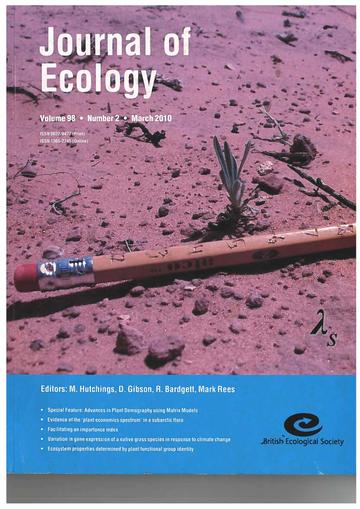Population modelling & methods
Demography is rooted within actuarial science. As such, demographic research is rather quantitative. Thus, tracking statistical progress in demographic modelling has become challenging for a range of ecologists and conservation managers. The lack of connection between demographic modelling techniques and biologists has hindered the further combination of ecological/evolutionary questions and robust demographic models in the field.
The SalGo team leads the development of open-access R routine and packages (e.g. IPMpack, ipmR, R-Age, R-COMPADRE) that allow users to relatively easily and reliably apply demographic techniques to the analyses of laboratory and field collected data of animals, plants, and microbes. These approaches help researchers answer a wide range of questions, from conservation biology and management, to ecology, evolution and economics.
The SalGo team also runs frequent workshops on the development, analyses and interpretation of demographic modelling techniques (e.g. integral projection models, life tables, matrix population models, integrated population models) both nationally and internationally. If you would like to host one of such events, please contact us with details on the number of potential participants, venue, and economic support - we charge flight, accommodation, meals and a teaching fee (the latter is waived for developing countries). We are particularly interested in running these activities in areas of the globe where less demographic knowledge is available.

SalGo team members:
- Heitor Campos de Sousa
- Fiona Chong
- Aldo Compagnoni
- Sam Gascoigne
- Chrissy Hernandez
- Maja Kajin
- Sam Levin
- Rob Salguero-Gomez
- Gabriel Santos
- Hal Caswell - Univeristy of Amsterdam, The Netherlands
- Tamora James - University of Sheffield, UK
- Owen Jones - University of Southern Denmark, Denmark
- Eelke Jongejans - Radboud University, The Netherlands
- Cory Merow - University of Connecticut, USA
- Jess Metcalf - Princeton University, USA
- Sean McMahon - Smithsonian Institution, USA
- Will Petry - North Carolina State University, USA
- Iain Stott - University of Lincoln, UK
- Lotte de Vries - University of Utretch, The Netherlands
Selected Publications
Gascoigne S, Kajin M & Salguero-Gómez R. 2023. Criteria for buffering in ecological modelling. Trends in Ecology and Evolution 3246 DOI 10.1016/j.tree.2023.11.006
de Vries C, Bernard C & Salguero-Gómez R. 2023. Discretising Keyfitz' entropy for studies of actuarial senescence and comparative demography. Methods in Ecology and Evolution 14, 1312-1319 DOI 10.1111/2041-210X.14083
Jones O, Barks P, Stott, I, Jackson J, Römer G, James T, Che-Castaldo J, Levin S, Thomas C, Petry W, Schuette C, Capdevila P, Salguero-Gómez R. 2022. Rcompadre and Rage - two R packages to facilitate the use of the COMPADRE and COMADRE databases and calculation of life history traits from matrix population models. Methods in Ecology & Evolution 13: 770-781 DOI 10.1111/2041-210X.13792
Levin S, Compagnoni A, Childs D, Evers S, Knight T* & Salguero-Gómez R*. 2021. ipmr: Flexibly implement Integral Projection Models in R. Methods in Ecology and Evolution 12, 1826-1834 DOI 10.1111/2041-210X.13683
Salguero-Gómez R & Gamelon M. 2021. Demographic Methods across the Tree of Life. Oxford University Press ISBN: 9780198838609
Logofet D* & Salguero-Gómez R*. 2021. Novel challenges and opportunities in the theory and practice of matrix population modelling. Ecological Modelling 443, 109457 DOI 10.1016/j.ecolmodel.2021.109457
Levin S, Compagnoni A, Childs D, Evers S, Knight T* & Salguero-Gómez R*. 2021. ipmr: Flexibly implement Integral Projection Models in R. Methods in Ecology and Evolution 12, 1826-1834 DOI 10.1111/2041-210X.13683
Logofet D* & Salguero-Gómez R*. 2021. Novel challenges and opportunities in the theory and practice of matrix population modelling. Ecological Modelling 443, 109457 DOI 10.1016/j.ecolmodel.2021.109457
Takada T, Kawai Y & Salguero-Gómez R. 2018. A cautionary note on elasticity analyses in a ternary plot using randomly generated population matrices. Population Ecology 1-11. DOI 10.1007/s10144-018-0619-4
Paniw M, Quintana-Ascencio P, Ojeda F & Salguero-Gómez R. 2017. Accounting for uncertainty in dormant life stages in stochastic demographic models. Oikos 6, 900-909. DOI 10.1111/oik.03696
Metcalf CJE, Ellner SP, Childs DZ, Salguero-Gómez R, Merow C, McMahon SM, Jongejans E & Rees M. Statistical modelling of annual variation for stochastic population dynamics using integral projection models. Methods in Ecology and Evolution 6, 1007-1017. DOI 10.1111/2041-210X.12405
Merow C, Dahlgren J, Metcalf CJE, Childs D, Evans MEK, Jongejans E, Metcalf CJE, Record S, Rees M, Salguero-Gómez R & McMahon S. 2014. Advancing population ecology with integral projection models: a practical guide. Methods in Ecology & Evolution 2, 99-110. Editor’s monthly publication choice. DOI 10.1111/2041-210X.12146
Metcalf CJE, McMahon S, Salguero-Gómez R, & Jongejans E. 2013. IPMpack: an R package for integral projection models. Methods in Ecology & Evolution 4, 195-200. Editor’s monthly publication choice DOI 10.1111/2041-210x.12001
Caswell H, Salguero-Gómez R. 2013. Age, stage, and senescence in plants. Journal of Ecology 3, 585-595. DOI 10.1111/1365-2745.12088
*Shared senior author



